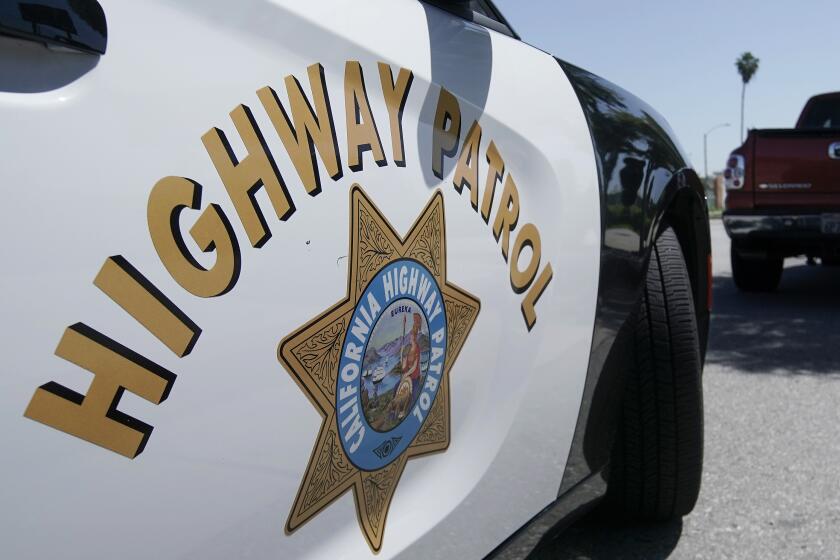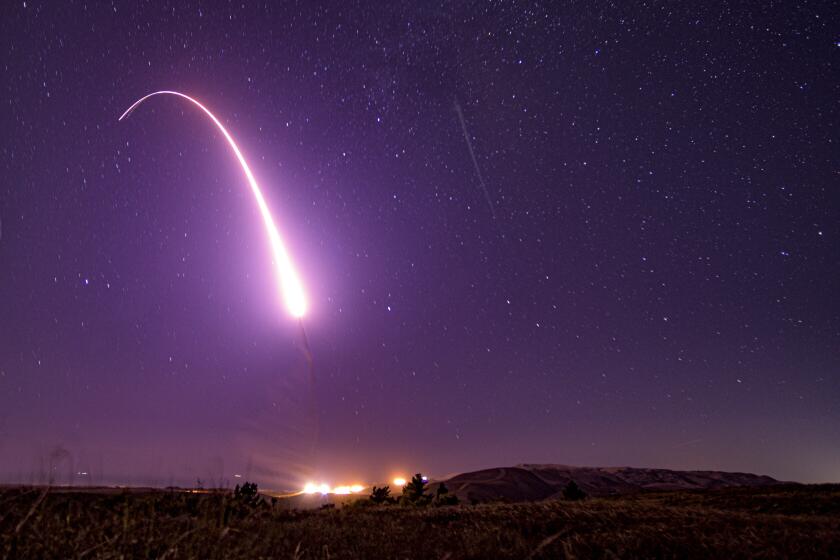Bobbi Fiedler : With First Battle Won, Strategist Sizes Up Hurdles on Path to Secession
- Share via
The state law that made it virtually impossible to secede from Los Angeles has been changed. The next move, if there is to be one, is up to residents of the San Fernando Valley. In an interview with The Times, former U.S. Rep. Bobbi Fiedler talks about what that move should be.
* * *
*
Question: To paraphrase the last line of a famous novel, now you can begin. Where do things stand now that the law has been changed and secession is possible?
Answer: Right now, we are in flux. There has not been the establishment as to who the leadership is going to be in terms of the secession movement itself.
Q: Is there a distinction in your mind between lobbying for the legislation and moving ahead to the next phase?
A: The legislation got through because of [former Assemblywoman Paula Boland’s] efforts, along with [Assemblymen] Tom McClintock and Bob Hertzberg. Valley VOTE organized to support the bill after it was already a reality. Their efforts were meaningful through that process. Now it becomes far more complex. There’s a difference in following the lead of legislators . . . and taking the lead.
Q: You and Boland were part of a group that stepped forward after the bill passed to say you wanted to lead the secession movement. Then Valley VOTE said they wanted to lead it. Since then, some Valley VOTE leaders are talking as if they are in charge.
A: The issue is not resolved. . . . It should be resolved soon in that [Galpin Ford owner] Bert Boeckmann and [attorney] David Fleming have been brought into the discussion, so they will participate. . . . They will make a proposal.
Q: What does it take to lead this effort?
A: This is a very complicated political endeavor with land mines all around, at every step of the way. It takes a great deal of experience to avoid as many of those land mines as possible because of complexity of the demographics, the economics, the legal and political consequences.
Q: What’s an example of a potential land mine?
A: Someone makes a comment about excluding some segment of the city as a whole and the Valley is faced in court with a challenge that the intent of that individual, who might be in a leadership position, was to isolate the minority community.
Q: How would you assess the support for secession at this point?
A: There’s an underlying feeling of second-class citizenship in the San Fernando Valley. However, there’s also a great deal of confusion on the part of the people . . . [about] what it will mean to secede.
Q: How would you deal with that confusion?
A: It’s very important to make clear that if you’re for secession, you’re for secession and not just for a vote for secession. Why bother if you are not for secession to assert your democratic muscle, if it is not for a specific purpose, in this case, to achieve secession? It’s pretty expensive as a research project to find out how people feel about it.
Q: Some community leaders who backed the legislation don’t want anyone to utter the word “secession,” which to them is a four-letter word.
A: It’s that issue we’re in conflict over. In my view, advocacy for secession is an essential component of asking people to go to the polls to cast a vote. . . . There are a lot of people . . . who are straddling the fence. They want to be in on the action but they don’t want to take a position on secession.
Q: Why?
A: I don’t know. I can’t understand why it is unclear to them at this point. Maybe they feel they have to have more information. You hear more and more people say, “If the city of Los Angeles would only give us more money or resources we won’t do this.” It represents to me a halfhearted attempt to push the city into providing more resources while at the same time not thinking secession is a necessity.
Q: Once the leadership is established, what’s the next step?
A: The first thing that has to be done is to raise a substantial amount of money because it costs a lot of money to go through this process--my best guess is somewhere between $2 million and $5 million. . . . Not only do you have to gather signatures [which triggers a study of secession’s impacts], but you’re going to need highly qualified, very expensive attorneys to protect, first the petitions’ legality, and then to deal with warding off at least a dozen potential intervenors [in the lawsuit]--legal opponents like unions, like the ACLU, like the NAACP.
Q: Why go straight to secession instead of asking people first to sign the petitions so the study can be done, then decide later whether or not they want to secede?
A: This is something like . . . you can’t be a little bit pregnant. Either you’re for it or you’re not. If not, why bother?
Q: Are you saying you can’t sneak out of Los Angeles, that seceding can’t be a covert operation?
A: No, it cannot. This is, by the way, a gigantic undertaking. This is not a small thing to do. It will have very significant impacts on both sides of the city. It’s possible some people may be simply overwhelmed by the enormity of it.
Q: How long do you think it will take to get the petitions signed?
A: If they have enough money, they can do it very quickly--four to six months.
Q: What would your pitch be to Valley voters?
A: For every $1 we send to Los Angeles, we get back less than 40 cents. The only way we are going to get our fair share of the tax pie is [to break away].
Q: And if the voters do decide to secede and form a new city, how long would that take?
A: Between five to eight years. This is ultimately going to land in the Supreme Court because there will be that many legal challenges that will merit taking it there.
Q: What role do you want to take?
A: I’d like to be involved in legal and political strategy, and if I felt there was a significant chance for success and responsible people at the helm, I feel I could contribute to the fund-raising effort.
Q: You don’t want to be a paid staff member?
A: Absolutely not.
Q: Is there enough civic cohesiveness in the far-flung reaches of the San Fernando Valley to bring people together for this effort?
A: I don’t think there’s any question people in the Valley identify with the Valley as a whole. Once you get over the hill, you get a different sense of belonging. Let’s face it: We’ve had bricks thrown at us ever since I got here in 1966.
Q: Why is that?
A: The focus here is different. The Valley is principally homeowning families who are upwardly mobile, trying to get their kids through school and live in a decent, safe neighborhood.
Q: Want to handicap the chances of secession making it to the ballot?
A: No.
Nancy Hill-Holtzman is a Times staff writer.
More to Read
Sign up for Essential California
The most important California stories and recommendations in your inbox every morning.
You may occasionally receive promotional content from the Los Angeles Times.










